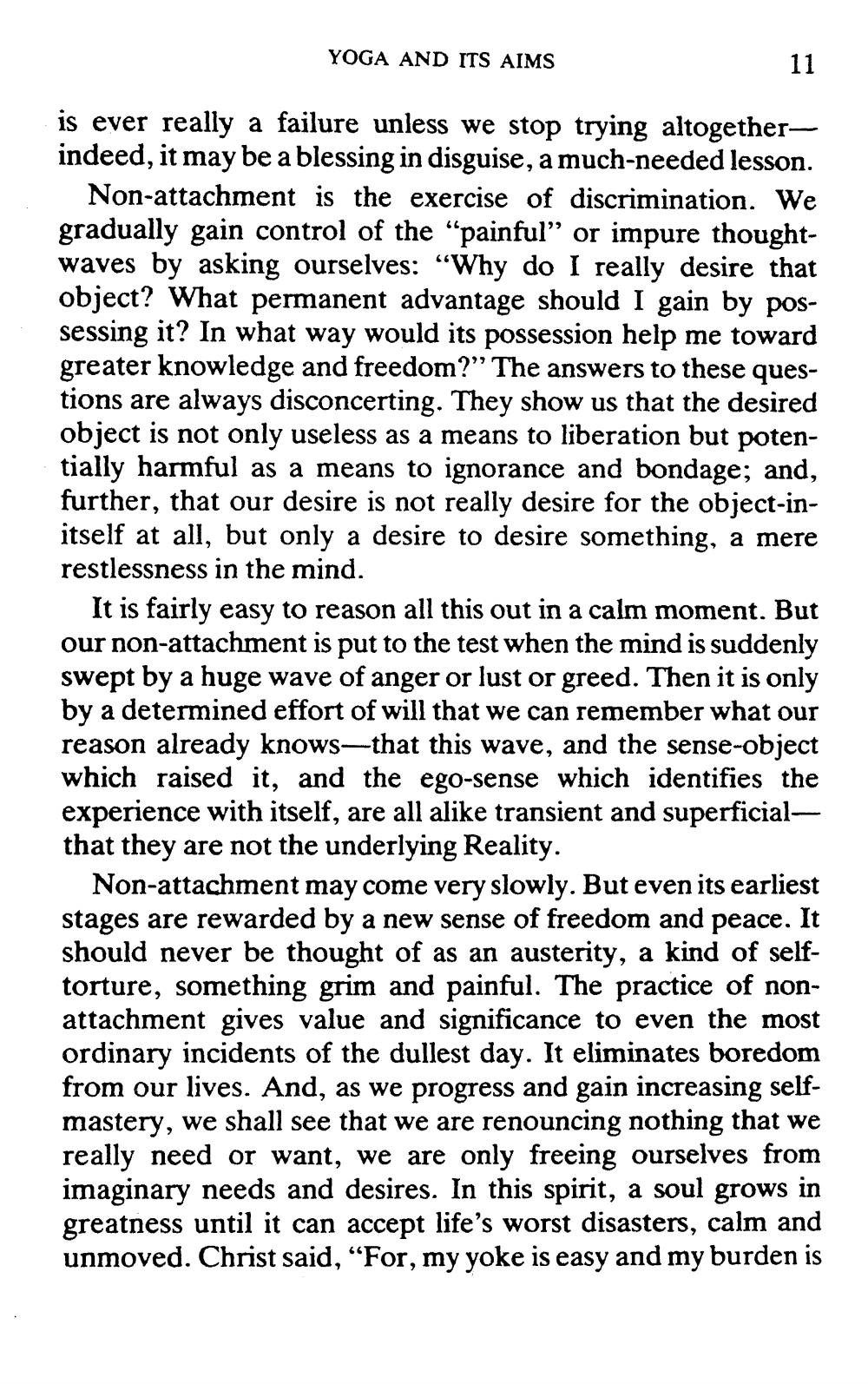________________
YOGA AND ITS AIMS
11
is ever really a failure unless we stop trying altogether indeed, it may be a blessing in disguise, a much-needed lesson.
Non-attachment is the exercise of discrimination. We gradually gain control of the painful” or impure thoughtwaves by asking ourselves: “Why do I really desire that object? What permanent advantage should I gain by possessing it? In what way would its possession help me toward greater knowledge and freedom?” The answers to these questions are always disconcerting. They show us that the desired object is not only useless as a means to liberation but potentially harmful as a means to ignorance and bondage; and, further, that our desire is not really desire for the object-initself at all, but only a desire to desire something, a mere restlessness in the mind.
It is fairly easy to reason all this out in a calm moment. But our non-attachment is put to the test when the mind is suddenly swept by a huge wave of anger or lust or greed. Then it is only by a determined effort of will that we can remember what our reason already knows-that this wave, and the sense-object which raised it, and the ego-sense which identifies the experience with itself, are all alike transient and superficialthat they are not the underlying Reality.
Non-attachment may come very slowly. But even its earliest stages are rewarded by a new sense of freedom and peace. It should never be thought of as an austerity, a kind of selftorture, something grim and painful. The practice of nonattachment gives value and significance to even the most ordinary incidents of the dullest day. It eliminates boredom from our lives. And, as we progress and gain increasing selfmastery, we shall see that we are renouncing nothing that we really need or want, we are only freeing ourselves from imaginary needs and desires. In this spirit, a soul grows in greatness until it can accept life's worst disasters, calm and unmoved. Christ said, “For, my yoke is easy and my burden is




